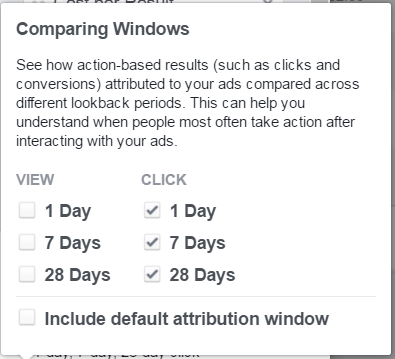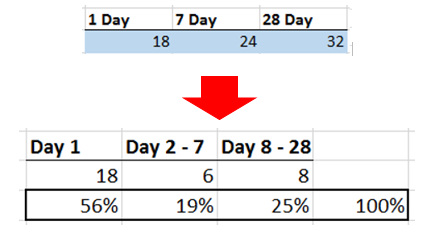October 8, 2021
The Ideal QA Process in Digital Advertising
Imagine it’s the first of the month and you’re curious about how your Facebook efforts performed over the previous month. A few weeks later, you check back and notice that some of the conversion numbers seem much higher than before. Don’t worry, you’re not going crazy – what you’re seeing here is a result of a Facebook tracking phenomenon called backfill.
Facebook conversion backfill occurs due to last click conversion attribution. Let’s say someone clicks on a Facebook ad on Wednesday. They are intrigued but don’t convert yet. That person later returns directly to the site on Saturday and converts. While other attribution models may give some credit to the day of conversion, Saturday, Facebook attributes the full conversion to the day the last click happened, Wednesday. If someone clicks on multiple Facebook ads, it will be attributed to the last ad clicked.
This conversion window only applies to the past 28 days, which means that if someone clicks a Facebook ad and returns 30 days later to convert, no conversion will be attributed to Facebook. Because of this last click attribution, conversions will continue to be attributed for a trailing 28 days, and your conversion results will be subject to change during that period.
Backfill is something we see in Google AdWords and Bing Ads as well; however, since Facebook prospecting ad interactions tend to occur much higher in the funnel than paid search ad clicks, the days to conversion for Facebook accounts is longer than it is on paid search accounts. Due to this, there are usually much higher amounts of backfill in Facebook. In some accounts, we have seen revenue increase by over 50% after one month simply due to backfill.
Knowing more about your Facebook conversion backfill allows you to make better projections and thus better decisions. Backfill helps you determine the time it takes for consumers to go from a click to a conversion. For higher price point items, we would expect a longer decision period and thus more backfill in the days and weeks after an initial click. For sales promotions, we would expect less backfill and a much higher day one attribution, since people are less likely to return and buy an item that is no longer on sale.
Knowledge of the average click to conversion periods will help you determine if your results are conclusive. In one example, I checked in on results of an ad copy test I was running after just one week. The results showed preference for one ad over another. However, knowing that previous backfill we’ve seen on the account indicates that 50% of conversions happen one week after the user clicks, I knew to wait longer to get more conclusive results. Sure enough, the ad I would have paused after one week ended up winning the test because of the backfill conversions!
How can you check the Facebook conversion backfill for your account?
Step 1: Go to Ad Manager in Facebook Business Manager. Customize columns and select the event you want to track.
Step 2: Pick a time period that is at least two months long so it’s statistically significant. Make sure it is at least 28 days from the current day to ensure the data is complete.
Step 3: In the Attribution Window Settings, select 1 Day, 7 Day, and 28 Day click. Leave the ‘Include default attribution window’ box unchecked.

Step 4: From here, it’s easiest to transfer the numbers to a spreadsheet. The click attribution shown is inclusive. So, in the image below, the ’28 Days’ with 32 purchases includes 24 purchases that occurred in the ‘7 Day’ window. Similarly, the 24 purchases in the ‘7 Day’ window include the 18 purchases in the ‘1 Day’ Window.

Step 5: Separate the data out by the incremental additions. Then, divide each window by the total number of purchases in the period (which will equal the total ‘28 Day’ window period).

From this, we see that 56% of the conversions occur on the first day of clicking an ad, 19% of conversions occur between two to seven days after clicking the ad, and 25% of conversions occur 8 to 28 days after the ad click.
Knowing your backfill is crucial when advertising on Facebook, so try calculating your backfill today to start making better-educated decisions in your account.
